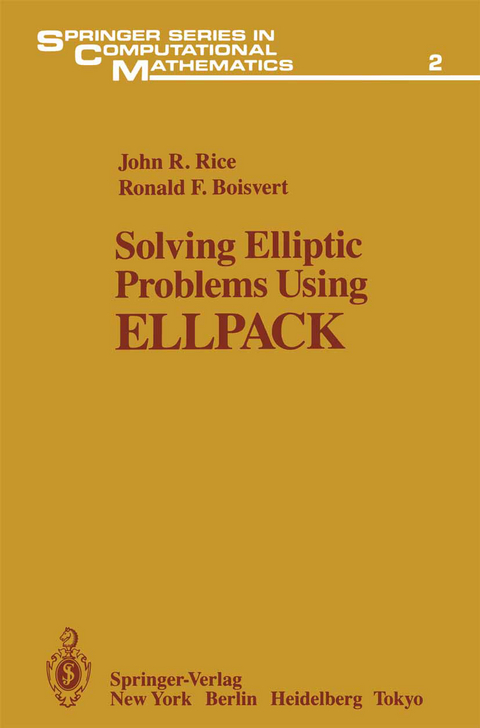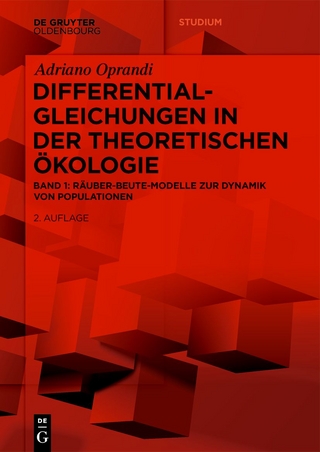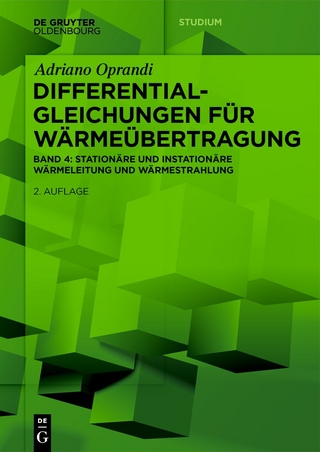
Solving Elliptic Problems Using ELLPACK
Springer-Verlag New York Inc.
978-1-4612-9528-0 (ISBN)
ELLP ACK is a many faceted system for solving elliptic partial differential equations. It is a forerunner of the very high level, problem solving environments or expert systems that will become common in the next decade. While it is still far removed from the goals of the future, it is also far advanced compared to the Fortran library approach in common current use. Many people will find ELLP ACK an easy way to solve simple or moderately complex elliptic problems. Others will be able to solve really hard problems by digging a little deeper into ELLP ACK. ELLP ACK is a research tool for the study of numerical methods for solving elliptic problems. Its original purpose was for the evaluation and comparison of numerical software for elliptic problems. Simple examples of this use are given in Chapters 9-11. The general conclusion is that there are many ways to solve most elliptic problems, there are large differences in their efficiency and the most common ways are often less efficient, sometimes dramatically so.
1: The ELLPACK System.- 1. Introduction.- 2. The ELLPACK Language.- 3. Examples.- 4. Advanced ELLPACK Features.- 5. Extending ELLPACK to Nonstandard Problems.- 2: The ELLPACK Modules.- 6. The ELLPACK Modules.- 7. ITPACK Solution Modules.- 3: Performance Evaluation.- 8. Performance and its Evaluation.- 9. The Model Problems.- 10. Performance of Discretization Modules.- 11. Performance of Solution Modules.- 4: Contributor’s Guide.- 12. Software Parts for Elliptic Problems.- 13. Interface Specifications.- 14. Module Interface Access.- 15. Programming Standards.- 16. Preprocessor Data.- 5: System Programming Guide.- 17. Installing ELLPACK.- 18. Tailoring ELLPACK.- Appendices.- A. The PDE Population by W. R. Dyksen, E. N. Houstis and J. R. Rice.- 1. Introduction.- 2. Characteristics of the Problems.- 3. Format of PDE Problem Descriptions.- 4. Acknowledgements.- 5. Problem Definitions and Plots.- 6. Sources of Problems.- 7. References.- The PG (Preprocessor Generator) System by J. F. Brophy.- 1. Introduction to PG Grammars.- 2. PG Rule Syntax.- 3. PG Actions.- 4. Special Segments.- 5. PG Internals.- 6. Installing PG.- 7. Acknowledgements.- 8. References.- The Template Processor by J. R. Rice, C. J. Ribbens and W. A. Ward.- 1. Introduction.- 2. General Description.- 3. Simple Example.- 4. Substitution Processing Facilities.- 5. Macro Processing Directives.- 6. Another Example.- 7. Preparing a Tuned Version of the Template Processor.- 8. Error Messages.- 9. References.- D. Examples of some ELLPACK Statements.
| Reihe/Serie | Springer Series in Computational Mathematics ; 2 |
|---|---|
| Zusatzinfo | 497 p. |
| Verlagsort | New York, NY |
| Sprache | englisch |
| Maße | 155 x 235 mm |
| Themenwelt | Mathematik / Informatik ► Mathematik ► Analysis |
| Mathematik / Informatik ► Mathematik ► Arithmetik / Zahlentheorie | |
| Mathematik / Informatik ► Mathematik ► Wahrscheinlichkeit / Kombinatorik | |
| ISBN-10 | 1-4612-9528-9 / 1461295289 |
| ISBN-13 | 978-1-4612-9528-0 / 9781461295280 |
| Zustand | Neuware |
| Haben Sie eine Frage zum Produkt? |
aus dem Bereich


